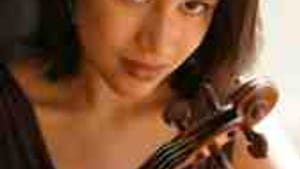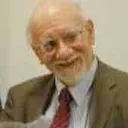Stay in the Loop
BSR publishes on a weekly schedule, with an email newsletter every Wednesday and Thursday morning. There’s no paywall, and subscribing is always free.
When everything clicks into place
Chamber Orchestra plays Faure, Mendelssohn and Beethoven

During the post-concert "classical conversation" that followed the Chamber Orchestra's latest outing, the guest soloist, violinist Elena Urioste, said she liked playing concertos because she liked playing in front of an orchestra "with the sound tumbling around you." She actually blocked out the audience, she said, so she could concentrate on the music.
Urioste's statement contrast interestingly to Soovin Kim's answer to a question after he played the Brahms Violin Concerto with the Chamber Orchestra last season. Kim said he didn't really understand what he was supposed to be doing until, as a student at Curtis, he heard Isaac Stern play the Brahms concerto. He became totally wrapped up in Stern's performance and realized he was supposed to give his listeners the kind of experience that Stern gave him.
Those two answers, it seems to me, sum up the two bone-deep reasons artists become obsessed with their odd trade, when you search beneath the surface attractions of glamour and public attention.
Those "'Aha!' moments
People always ask writers why they write, for some reason. (Does anybody ask lawyers why they lawyer? Or doctors why they doctor?) I usually lean toward Soovin Kim's attitude: I try to create, for my readers, the kind of experiences hundreds of writers have given me ever since I read my first book 67 years ago.
But it's not a one-or-the-other issue. I also derive some satisfaction from the craft of writing. There's nothing quite like those moments when your brain supplies you with a critical element and everything clicks into place.
Both violinists would probably say something similar if you pursued the subject. I'm certain Soovin Kim often blocks out the audience and concentrates on the play of his hands. I'm equally certain Elena Urioste knows the audience is there and values its response. She certainly indicated as much when she grinned at the way the applause tumbled over her when she finished playing Mendelssohn's second violin concerto.
Between passion and elegance
Whatever the artist's feelings, the bottom line for the audience is the results. As Urioste noted in her remarks, soloists must find the right balance between Romantic emotion and classical form when they play the Mendelssohn concerto; they must be "passionate but elegant."
Urioste produced an exceptionally intense, high-voltage first movement without violating her ideals and followed it with a slow movement that added dark weightiness to the sweetness and poetry of Mendelssohn's score. Conductor Dirk Brossé and the orchestra gave her the kind of support that surrounds the soloist with a meaningful context and makes you aware of significant details, like the cheery little comments from the woodwinds in the finale.
A camera at a parade
The least familiar item on the program was the opener—Faure's Pavane. This was the first time the Chamber Orchestra had played it on a subscription series, and I see no reason to question Bernard Jacobson's statement, in the program notes, that performances of the Pavane haven't been "abundantly available" in the United States. If Bernard hasn't heard a lot of American performances, nobody has.
The pavane was a Renaissance dance that's usually described as a formal walk accompanied by a stately melody. Faure's Pavane begins with a haunting woodwind melody, played over plucked strings, that gradually grows big and sonorous. The musical center of interest moves through the orchestra, from section to section, like a camera panning over different parts of a parade.
Fantasy has become a hugely popular publishing genre in the last 40 years, and I've often felt some enterprising musical organization should offer a concert aimed at fantasy audiences. Faure's Pavane would make a perfect opening number. It's a processional for exotic creatures that inhabit a magic court in a fairy tale world.
Beethoven's fingerprints
The afternoon ended with a piece the Chamber Orchestra has played at least twice before— Beethoven's First Symphony. The First sounds best when it's played by a smaller, Mozart-era orchestra, and it could become one of the Chamber Orchestra's specialties.
This time around, I was impressed by the way it contains most of the elements we associate with its author. The opening phrases sound like the introduction to an important event. The slow movement is a processional that foreshadows the funeral march in the Eroica. The scherzo contains some of the nervous chatter that dominates the scherzo in the Ninth. And the First is packed, from beginning to end, with Beethoven's least appreciated strength: the endless inventiveness that keeps throwing new things at you, no matter how many times you've heard it.
The Chamber Orchestra's new leader programmed three widely varied pieces, introduced an electric young soloist, and led a post-concert discussion that was almost as interesting as the music itself. Chalk up an unqualified win for the new management.♦
To read a response, click here.
Urioste's statement contrast interestingly to Soovin Kim's answer to a question after he played the Brahms Violin Concerto with the Chamber Orchestra last season. Kim said he didn't really understand what he was supposed to be doing until, as a student at Curtis, he heard Isaac Stern play the Brahms concerto. He became totally wrapped up in Stern's performance and realized he was supposed to give his listeners the kind of experience that Stern gave him.
Those two answers, it seems to me, sum up the two bone-deep reasons artists become obsessed with their odd trade, when you search beneath the surface attractions of glamour and public attention.
Those "'Aha!' moments
People always ask writers why they write, for some reason. (Does anybody ask lawyers why they lawyer? Or doctors why they doctor?) I usually lean toward Soovin Kim's attitude: I try to create, for my readers, the kind of experiences hundreds of writers have given me ever since I read my first book 67 years ago.
But it's not a one-or-the-other issue. I also derive some satisfaction from the craft of writing. There's nothing quite like those moments when your brain supplies you with a critical element and everything clicks into place.
Both violinists would probably say something similar if you pursued the subject. I'm certain Soovin Kim often blocks out the audience and concentrates on the play of his hands. I'm equally certain Elena Urioste knows the audience is there and values its response. She certainly indicated as much when she grinned at the way the applause tumbled over her when she finished playing Mendelssohn's second violin concerto.
Between passion and elegance
Whatever the artist's feelings, the bottom line for the audience is the results. As Urioste noted in her remarks, soloists must find the right balance between Romantic emotion and classical form when they play the Mendelssohn concerto; they must be "passionate but elegant."
Urioste produced an exceptionally intense, high-voltage first movement without violating her ideals and followed it with a slow movement that added dark weightiness to the sweetness and poetry of Mendelssohn's score. Conductor Dirk Brossé and the orchestra gave her the kind of support that surrounds the soloist with a meaningful context and makes you aware of significant details, like the cheery little comments from the woodwinds in the finale.
A camera at a parade
The least familiar item on the program was the opener—Faure's Pavane. This was the first time the Chamber Orchestra had played it on a subscription series, and I see no reason to question Bernard Jacobson's statement, in the program notes, that performances of the Pavane haven't been "abundantly available" in the United States. If Bernard hasn't heard a lot of American performances, nobody has.
The pavane was a Renaissance dance that's usually described as a formal walk accompanied by a stately melody. Faure's Pavane begins with a haunting woodwind melody, played over plucked strings, that gradually grows big and sonorous. The musical center of interest moves through the orchestra, from section to section, like a camera panning over different parts of a parade.
Fantasy has become a hugely popular publishing genre in the last 40 years, and I've often felt some enterprising musical organization should offer a concert aimed at fantasy audiences. Faure's Pavane would make a perfect opening number. It's a processional for exotic creatures that inhabit a magic court in a fairy tale world.
Beethoven's fingerprints
The afternoon ended with a piece the Chamber Orchestra has played at least twice before— Beethoven's First Symphony. The First sounds best when it's played by a smaller, Mozart-era orchestra, and it could become one of the Chamber Orchestra's specialties.
This time around, I was impressed by the way it contains most of the elements we associate with its author. The opening phrases sound like the introduction to an important event. The slow movement is a processional that foreshadows the funeral march in the Eroica. The scherzo contains some of the nervous chatter that dominates the scherzo in the Ninth. And the First is packed, from beginning to end, with Beethoven's least appreciated strength: the endless inventiveness that keeps throwing new things at you, no matter how many times you've heard it.
The Chamber Orchestra's new leader programmed three widely varied pieces, introduced an electric young soloist, and led a post-concert discussion that was almost as interesting as the music itself. Chalk up an unqualified win for the new management.♦
To read a response, click here.
What, When, Where
Chamber Orchestra of Philadelphia: Faure, Pavane; Mendelssohn, Violin Concerto No. 2 in E Minor (Elena Urioste, violin); Beethoven, Symphony No. 1 in C Major. Dirk Brossé, conductor. February 13, 2011 at Perelman Theater, Kimmel Center, Broad and Spruce Sts. (215) 545-1739 or www.chamberorchestra.org. (Repeated February 15, at Temple University Performing Arts Center, 1837 N. Broad St. www.thebaptisttemple.org.)
Sign up for our newsletter
All of the week's new articles, all in one place. Sign up for the free weekly BSR newsletters, and don't miss a conversation.

 Tom Purdom
Tom Purdom